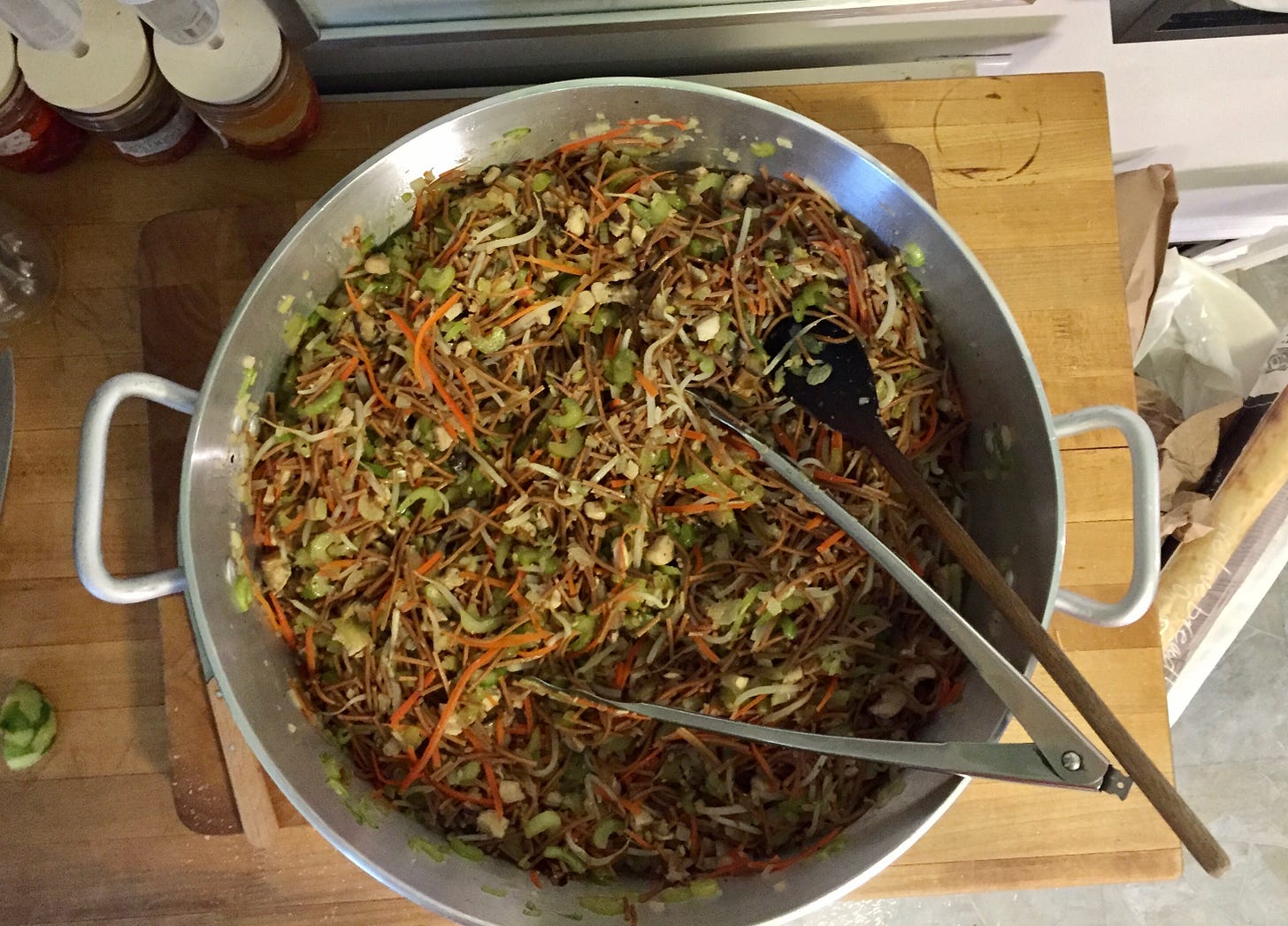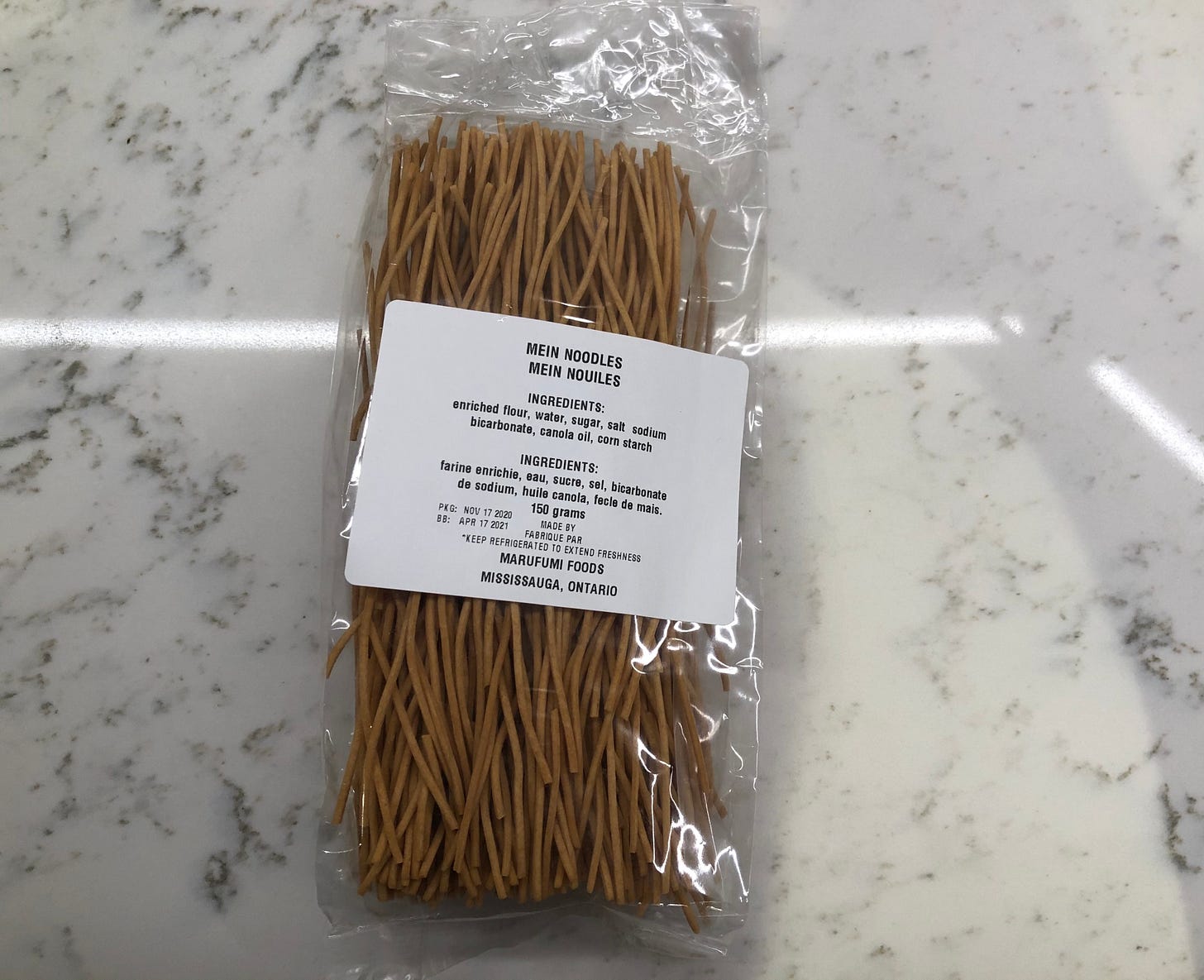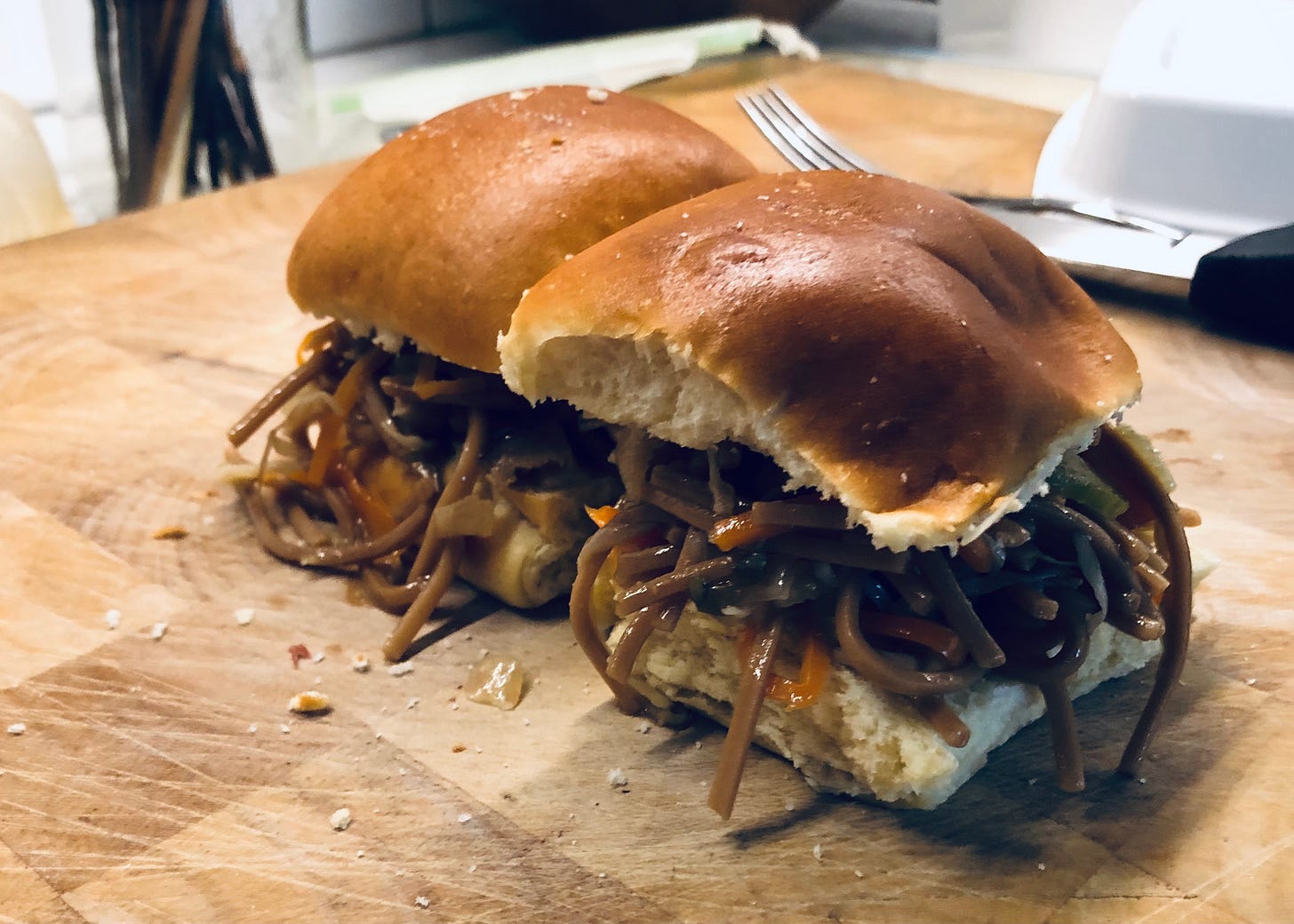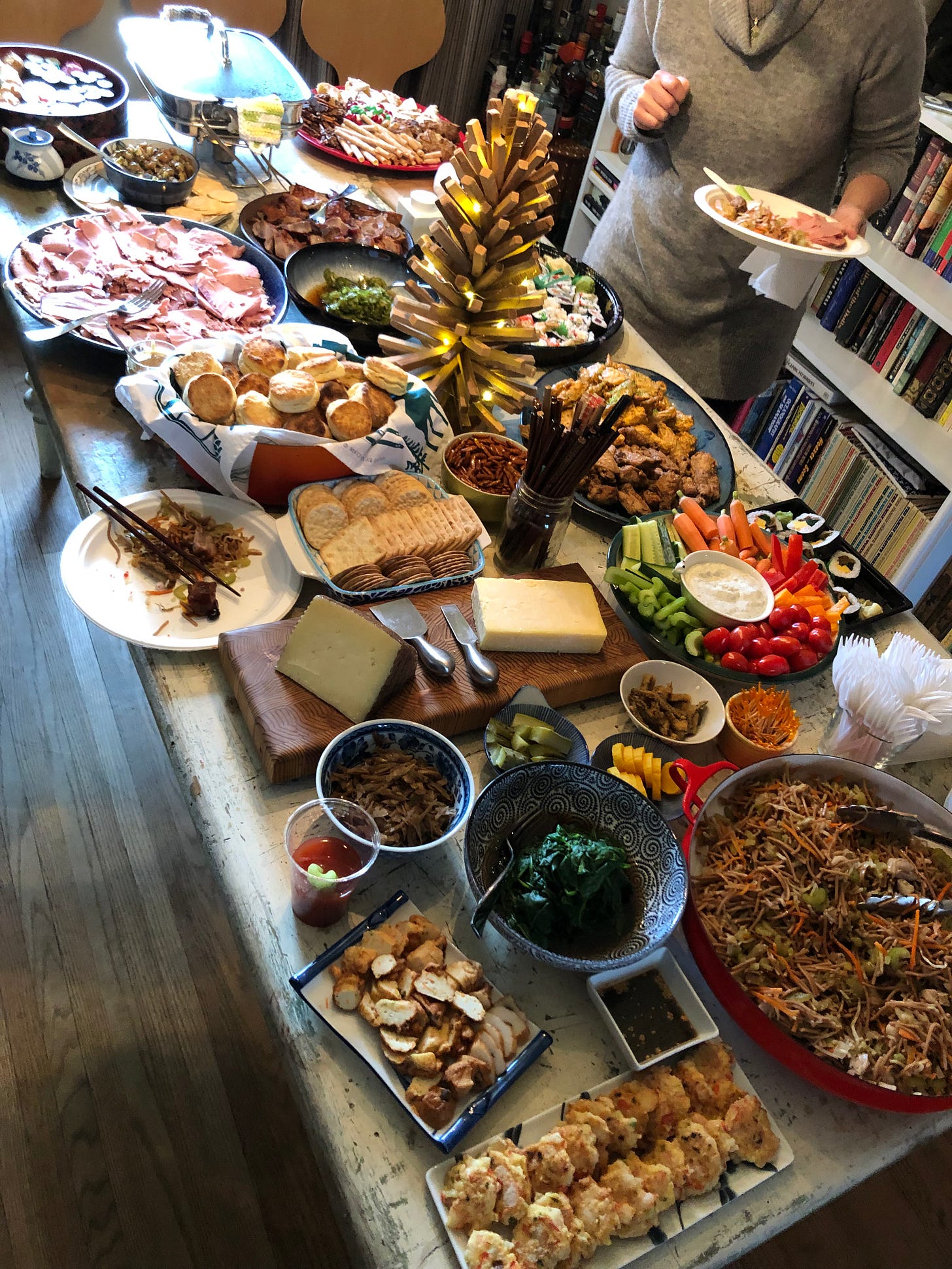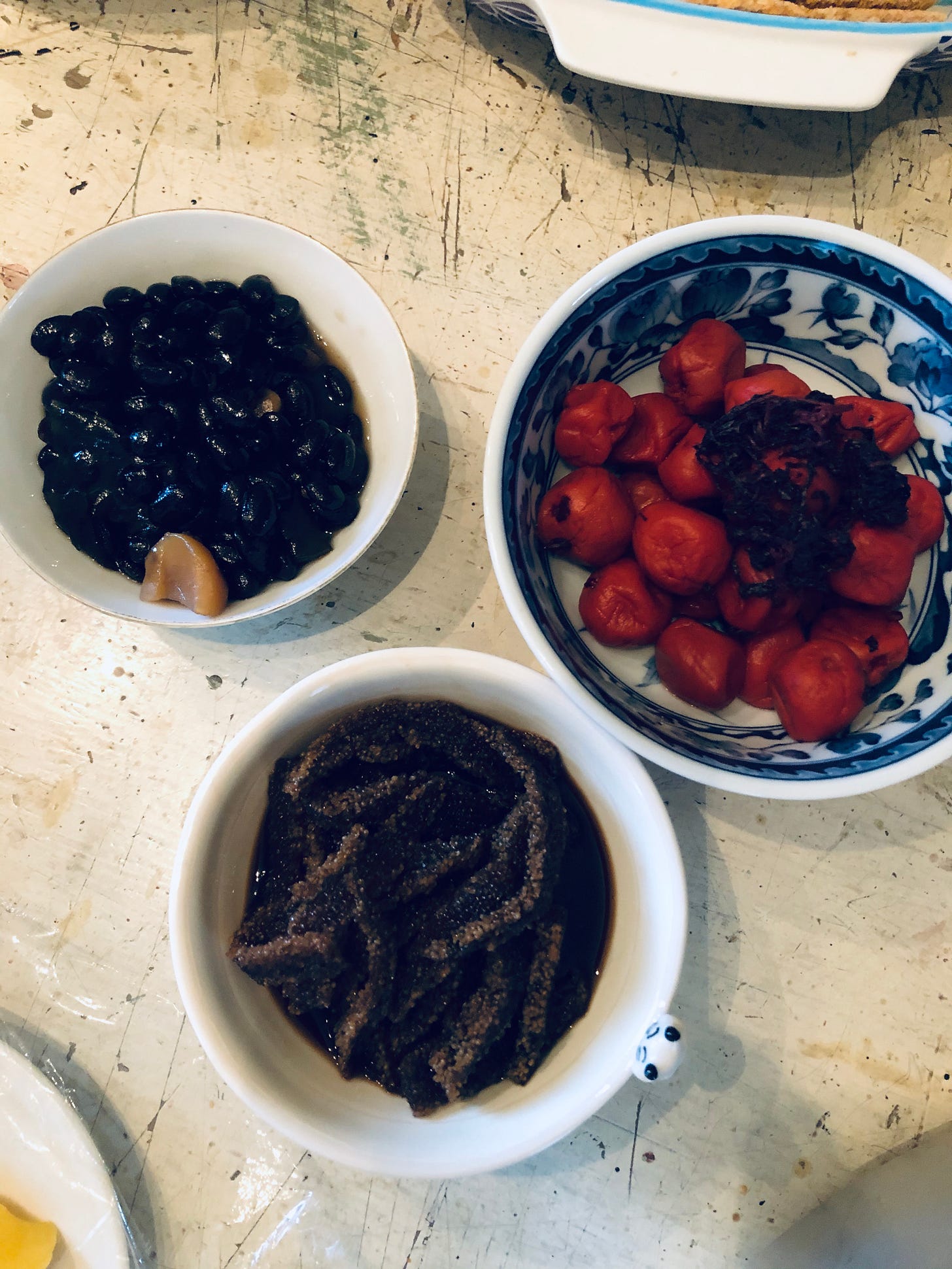6: The Mein Event
How a lost tradition becomes a new one

When the pandemic hit, I left all of the events I’d planned to attend in my Google calendar, even after they were cancelled. Throughout the spring I’d get reminders that I should have been going to the Jays’ home opener or seeing Lyle Lovett and John Hiatt or the My Dad Wrote A Porno live show. By the beginning of June, that had all stopped. No more plans had been made.
In the last few days, they’ve started again. “Check your shopping notes.” “Steam the wings today.” “Cook the wings and chow mein today, not tomorrow. You won’t have time tomorrow.” They’re reminders that I’d set to come up at the end of every year, telling me what and when to do the multi-day preparations that make hosting New Year’s Day as easy as possible. At the end of 2020, of course, they’re a reminder of what is not happening this year.

Until they moved into an assisted living facility in the early 2000s, my grandparents hosted New Year’s at their house. It was never called an open house or, as some of my friends call it, a levee. It was just New Year’s. The same thing happened in the homes of all Japanese-Canadian grandparents. A steady stream of visitors throughout the day. Relatives, neighbours, friends, many of whom you’d only see at New Year’s. Cousins would play hide-and-seek. The TV would be tuned to a football game and an uncle would be asleep in front of it. I guess none of that is particularly different from non-Japanese-Canadian family gatherings. But the table, oh, the table!
Their dining room table was almost completely covered in dishes refreshed seemingly by magic, with tiny spots around the perimeter where you could rest your small plate. There would be futomaki and inarizushi. Tuna sashimi. Kazunoko, herring roe attached to kelp that’s simmered in shoyu, mirin, and sake. A side of cooked salmon sent by relatives still on the West Coast. Chicken wings. Roast beef. My grandmother’s homemade spicy pickles. Kamaboko fish cake. Takuan. There must have been a vegetable somewhere. You took a small plate, made the rounds, and then found somewhere to sit and you ate. And did it all again many more times. (My family still reminds me that when I was very young I asked if I could have a bowl of Corn Flakes instead.)
But the most important dish on the table was the chow mein.
Japanese-Canadian chow mein is its own thing, a dish completely separate from udon, soba, or other traditional Japanese noodle dishes. It’s derived from Chinese chow mein, taught to the wives of Japanese coal miners in Cumberland, BC by a Chinese man in town in the early 20th century. Since then it has evolved, as all recipes do, and every family’s recipe is different. Some, like my family, use chicken instead of pork. Others are topped with aonori and pickled ginger, like yakisoba. But they all include vegetables not usually associated with Japanese cooking, celery and globe onions. (Leeks and scallions are the norm in Japan. Globe onions are referred to as “spherical leeks.”) And always handfuls of bean sprouts.
On the West Coast they use Farkay noodles. In Ontario we use fried brown Japanese mein noodles made by Marufumi Foods, the only manufacturer of this type of noodle. As such it is a constant source of anxiety among Ontario’s Nikkei community, with rumours constantly circulating that its closure is imminent. (Read the comments.) After I finish writing this, I should probably write my elected officials and ask to have Marufumi Foods declared an Important Cultural Property.
It’s very simple to make. Sauteé thinly sliced celery, finely diced onions, julienned carrots, and chopped shiitake mushrooms in a neutral oil like canola. My Auntie Kei says to start the carrot and mushroom on one side of the pan and the celery and onion on the other. I have no idea what this is supposed to do, but I also know you don’t mess with things your aunties tell you to do. Chicken that’s marinated in shoyu and mirin is sauteed. Bean sprouts go in and everything gets mixed. Finally the mein, which has been broken into shorter lengths, gets added. It’s stirred together and then covered to let steam with the heat off. The seasoning gets tweaked and there you have it: chow mein. January 2nd, it goes into a sandwich between two slices of cheap, white bread.
To see the process in photos, click here for an Instagram story of me making it this year.
In 2013, I told Beth how much I missed going to New Year’s. The first year after my grandparents moved out of their house, my father hosted a smaller gathering, but it didn’t take. It was too soon, I think. But in 2013, almost a decade later, I felt the absence. Beth suggested that we host it. And since then we have.
Just like my grandparents table adapted to their surroundings, incorporating western food like roast beef to their table, ours reflects who we are in the early 21st century. My sister brings sushi, but also a mountain of ham for the biscuits I make. My Auntie Myra makes even more sushi and brings Jell-O squares (among many other things, including some of my grandparents’ serving dishes, which she leaves with us). My father is responsible for the kamaboko and cooks an octopus, but he also brings things like poke. I make kazunoko and ohitashi and cucumber sunomono. There is always a bowl of Japanese black beans on the table. We were always told to eat an odd number for good luck, as an even number brings bad luck. (A lot of people must have eaten even numbers last year.) There’s cheese and crackers, umeboshi (my mother’s favourite), Chinese dumplings and barbecue, Moishe’s cole slaw, and my homemade spicy pickles. I’ve learned that there is no magic to the dishes refreshing, just constant monitoring, which the whole family helps with.
Since 2013 New Year’s has grown. Evite tells me we had 24 “Yes” responses that year. In 2020 we had 55. Somehow people manage to stagger their arrivals and departures so our small house is crowded, but never a mob scene. It’s also grown as our friends’ kids have grown. They take up the same amount of space on the guest list as they always have, but in a house the size of ours, you really feel the difference between a three-year-old and a ten-year-old. This is probably something parents are acutely aware of but never occurred to me.
Beyond the obvious signs, like the absence of children, that we are not parents, some subtle ones show themselves at New Year’s. We have almost nothing for kids to do while they’re here. The first year our niece and one of our friends’ sons played in the backyard with all we had to offer: a wig and a yoga ball. (In subsequent years, Beth did build a kids’ cave by lining the closet under the stairs with sofa cushions and giving out flashlights.) A few years ago we noticed a lot of juice boxes that had been abandoned while still very full. When Beth was pouring a juice box into a glass for a neighbour we realized why: it had expired three years earlier and had turned the grayest orange that ever was. I apologize if we got your kids drunk on inadvertent prison toilet wine that day.
None of that is happening on New Year’s Day 2021, of course. And, of course, I will miss it. I’ll miss the first arrivals and the last departures. The relatives who happen to be in town from far away. The friends’ girlfriends and boyfriends who make a single appearance and the ones who keep coming back even after they stop being girlfriends and boyfriends. I’ll miss crossing the streams of acquaintance, with relatives meeting friends, colleagues meeting neighbours, and Beth’s friends meeting mine. A superspreader event of good cheer. I’ll miss both couples named Matt and Rebecca. And I’ll miss the people who have come to incorporate our New Year’s into their family traditions as well.
But I won’t miss the chow mein because I’m still making that. And not in a pared-down, single serving each for Beth and me. I’m hauling out the 18-quart brazier that takes up three burners and only gets used to make chow mein and I’m making as much as I always do. Four bags of noodles. Two bunches of celery. More than a kilogram of bean sprouts. We’ll pack most of it up and drop it on porches so the people who look forward to New Year’s as much as we do won’t have to miss the chow mein either.



